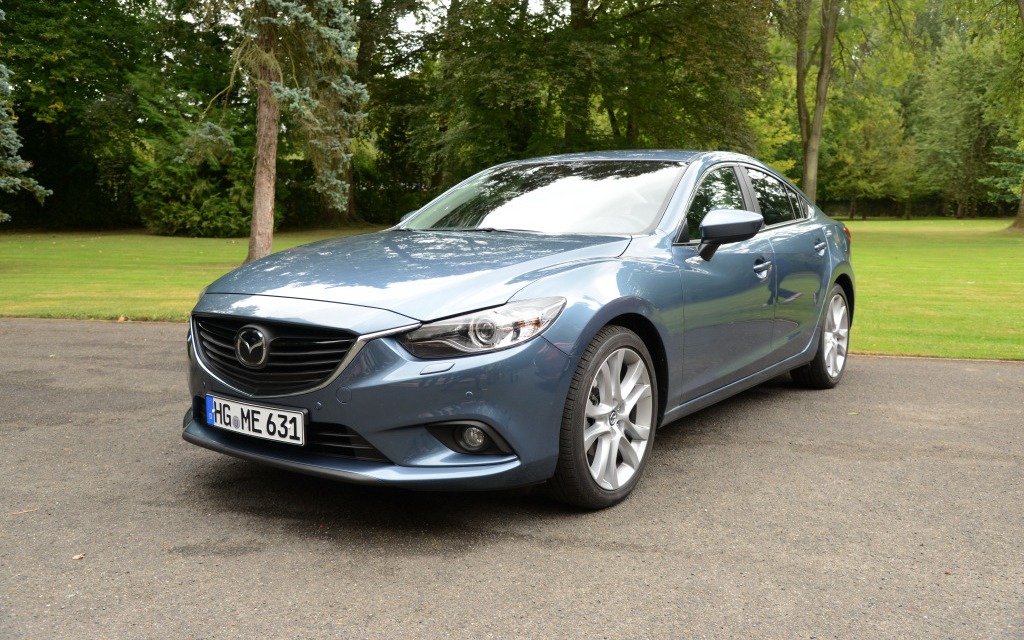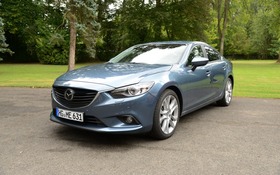2014 Mazda6: Sophisticated line-up

| Strong points |
|
|---|---|
| Weak points |
|
Mazda is set to release the latest generation of its mid-size sedan, the Mazda6, at the start of 2013. Its arrival will be the culmination of a project that began several years ago with the goal of radically transforming all of this manufacturer’s vehicles.
The dawn of this program dates back a couple of years, when Mazda invited a group of journalists to discover the technical subtleties of its SKYACTIV system, which was in development at the time and included more fuel efficient engines and a new platform designed to improve handling, make the ride quieter and increase security. I was part of that group and had the chance to drive some prototypes of this future generation Mazda6. I also attended the unveiling of the Shinari, the concept-car that illustrated the new design philosophy known as Kodo.
- Also: 2014 Mazda6: Humans Are Capable Of Building Beatiful Things
- Also: 2014 Mazda MAZDA6: Dress For The Job You Want, Not The One You Have
The plan was completed at the last Paris Auto Show, where a new wagon was presented to the European public along with a sedan that had already been unveiled during the Moscow Auto Show a few weeks prior. On the same occasion, I was given the opportunity to drive a prototype of the sedan that will be sold on our continent at the beginning of next year. There is a wagon as well, but, alas, it will not be distributed in North America.
Inspired by the Shinari
To illustrate the Kodo design philosophy, Mazda had asked its stylists to conceive a sedan using various characteristics and rounded lines to exemplify the soul of movement. While the Shinari concept car impressed us as much with its elegance as with its innovative visual aspects, it would have been unrealistic to expect all these features in a production model – but they managed to integrate quite a number of them into the new Mazda6.
As with the Shinari, the front end, specifically the grille, draws your attention. Designers used it as a anchoring point for all of the rear-flowing lines. And to accentuate the car’s sporty nature, the rear section plunges elegantly toward the trunk, like a coupe. The almond shaped headlights extend onto the fender, which in turn fades progressively into the central partition. The rear section is simple and well balanced, with a chrome rod crossing straight through the upper part to solidify the body and add the illusion of width to the car.
Mazda is one of the best of the Japanese automakers when it comes to dashboard presentation, and this newcomer is no exception. The various shapes create a pleasant sense of balance and the controls are both accessible and well laid out. In the centre of the dashboard is a six-inch screen used to control the TomTom navigation system, which features attractive graphics and can be operated with either a touch screen or a button on the console, between the two seats.
The quality of the materials used is also noteworthy. Our test vehicles were prototypes, but the quality of the finish and assembly were impressive.
SKYACTIV + i-eloop
Obviously, the engine includes SKYACTIV technology. We test drove two versions of the sedan: the first was powered by the 2.5-litre four-cylinder gasoline engine paired with a six-speed automatic gearbox; the second version had a 2.2-litre diesel engine paired with a six-speed manual transmission. The first generates 192 horsepower and 189 lbs-ft of torque, while the second produces 175 horsepower and 309 lbs-ft of torque. The 2.5-litre will definitely be offered, but it has not been confirmed whether the diesel engine will actually be available in America.
The sedan’s wheelbase is 2,830 mm, one of the longest in the category. Despite these generous dimensions, the use of light high quality steel helps reduce the total weight by several kilos, while the body is more torsionally rigid than the version that it’s replacing. Moreover, the rear suspension features shock absorbers that are inclined toward the rear, ensuring better handling and shorter braking distances.
Moreover, this newcomer integrates a simple and ingenious system to help save a little more fuel. Known as i-eloop, this device stores electricity in a capacitor, then transfers this stored energy to the battery. The energy generated from braking is then transmitted to the capacitor, which stores it. When the car accelerates, this same electricity is transferred to the battery using a current converter, thus keeping the alternator from engaging too often and increasing fuel consumption. In the same vein, both engines are equipped with the i-stop system that cuts the engine when the vehicle comes to a stop and starts up again when you accelerate.
Mazda’s engineers pulled out all the stops in terms of active and passive safety. Indeed, depending on the version you choose and the optional equipment you order, you can benefit from radar cruise control, a warning system for when the driver is following another vehicle too closely, a lane departure warning system, Rear Vehicle Monitoring and automatic high beams. These lights are mobile in turns as a means of optimizing road lighting. Finally, the Hill Launch Assist system immobilizes the car when it’s stopped on an inclined surface.
Exemplary handling
I had the opportunity to drive the two aforementioned versions in the suburbs of Paris, where I took various routes, from local roads to the highway. In all cases, this Mazda6’s handling, the precision of its steering and engine performance all proved satisfactory. Having previously driven prototypes powered by the diesel engine, I had high expectations for this vehicle – and all were met. However, with the automatic engine shutdown, sometimes it’s a little rough when it starts again. Note that the gearbox is precise and the gears are well selected, but the most pleasant surprise was the 2.5-litre gas engine. Its accelerations are very linear and its performance is impressive for the engine capacity. That doesn’t make it a purebred sports car, but it does make it a well balanced car that won’t be intimidated by the other cars in its class. Mazda would be smart to offer this engine as an option in the CX-5.
The steering is very linear and helps optimize your trajectory in tight turns. I never once had to correct the trajectory the entire test drive. On the other hand, since it’s so linear, it doesn’t always feel like you’re going fast or accelerating. However, performance is respectable, with a projected 0-100 km/hr time of less than eight seconds.
This first encounter with the pre-production vehicles bodes well for the future, since this Mazda is not only elegant, but balanced and comfortable. Plus, it offers excellent handling, even though linear mechanics mitigate the thrill of the ride to a certain extent.
Now, we’ll just have to see what the production model is like!











